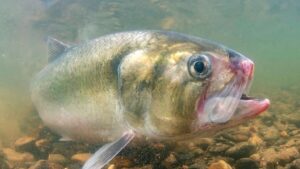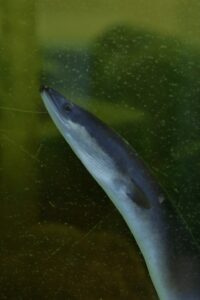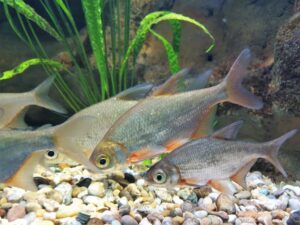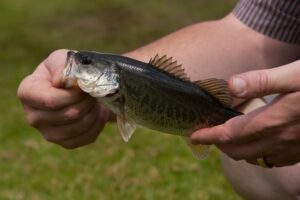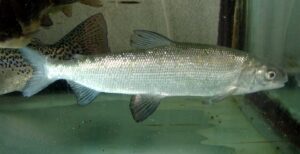Bottom feeder: Vimba Bream (Vimba vimba)
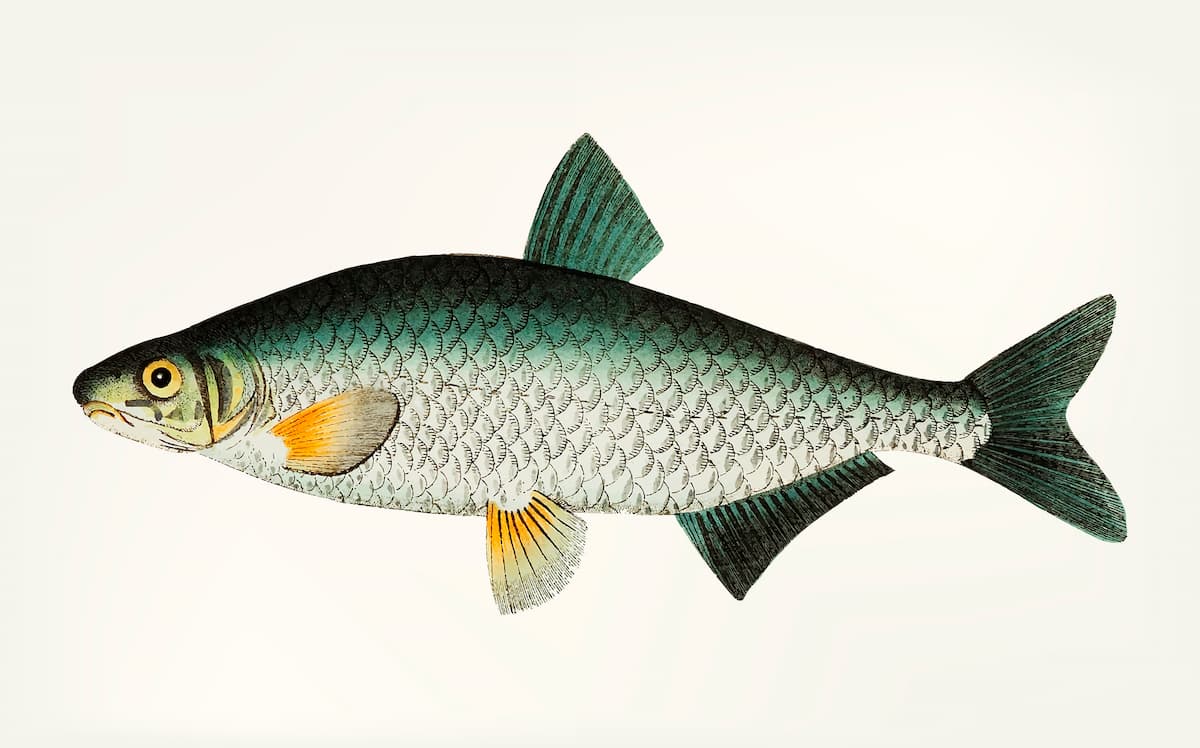
Discover the enchanting world of the Vimba Bream (Vimba vimba), a lesser-known yet fascinating species in European freshwater ecosystems.
Characterised by its slender, silvery form, the Vimba Bream thrives in Europe’s calm rivers and lakes. The piece illuminates its size, diet, and breeding habits, offering insights into its ecological role and challenges.
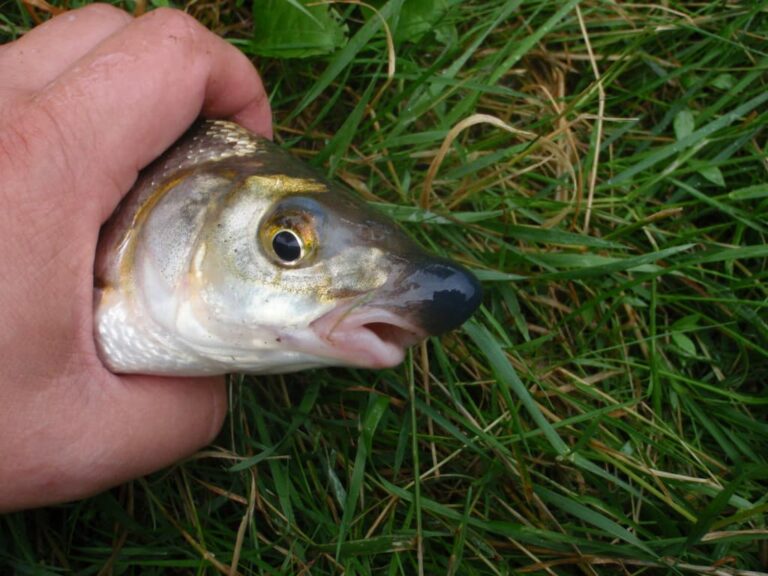
What is a Vimba bream ?
The Vimba Bream (Vimba vimba) is a freshwater fish species native to Europe and Western Asia, notable for its striking silver hue and slender physique. It typically reaches a length of 20-30 centimetres (7.9-11.8 inches) and weighs approximately 200-300 grams (7-10.6 ounces). The Vimba Bream can live up to 10 years, favouring the slow-moving waters of rivers, lakes, and reservoirs with sandy or gravelly substrates. This species primarily feeds on small invertebrates, algae, and plant material, adopting a bottom-feeding lifestyle that involves foraging along the riverbed.
Physical description and characteristics of Vimba fish
Detailed physical description
The Vimba Bream, scientifically known as Vimba vimba, is a slender, elongated fish with a silvery-grey colouration.
The Vimba Bream has large, dark eyes positioned high on its head, giving it a wide field of vision. Its jaws are relatively small, and its mouth is slightly upturned, adapted for feeding on small invertebrates and plant matter. This species is known for its distinctive pointed snout and feeding habits, as it is primarily a bottom feeder, using its specialised mouth and nose to forage for food in the sediment of rivers and lakes.
The Vimba fish’s dorsal fin is positioned closer to the tail and relatively short compared to its body length. Its anal fin is elongated and has a slightly concave shape, while its pectoral and pelvic fins are well-developed and positioned closer to the head. The fins are translucent with a slight tint of yellow, adding to the fish’s overall appearance.
The Vimba Bream’s body is covered in small, cycloid scales that give it a smooth texture and a reflective appearance.
| Class |
| Actinopterygii |
| Order |
| Cypriniformes |
| Family |
| Cyprinidae |
| Genus |
| Vimba |
| Species |
| V. Vimba |
| Binomial Name |
| Vimba vimba (Linnaeus, 1758) |
Size and weight
The Vimba fish typically measures between 30 and 40 centimetres in length, though specimens reaching up to 60 centimetres have been recorded. Its weight usually ranges from 500 grams to 2 kilograms.
Lifespan
Vimba Breams have a lifespan of around 8 to 10 years in the wild, depending on environmental conditions.
Habitat and Distribution
Natural habitat
The Vimba bream, which thrives in slow-flowing or still waters such as rivers, lakes, and estuaries, tends to inhabit deeper areas with gravel or sandy bottoms. These fish move in small groups along the sea coast, where they feed on invertebrates and the eggs of other fish, which they pick from the seabed. In May or June, they leave the sea and swim upriver to spawn in fast-moving tributaries with stony or gravelly bases and minimal vegetation. During this period, the males prepare several areas of the riverbed, where the females deposit batches of eggs.
Geographic distribution
The Vimba Bream is primarily found in Eastern and Northern Europe, from the Baltic Sea basin to the Black and Caspian basins. It is also present in the Eurasian regions, including the Caspian, Black, Marmara, and Baltic Sea basins. Its distribution ranges from Sweden and Finland north to 63°N and the North Sea basin from Elbe to Ems drainages.
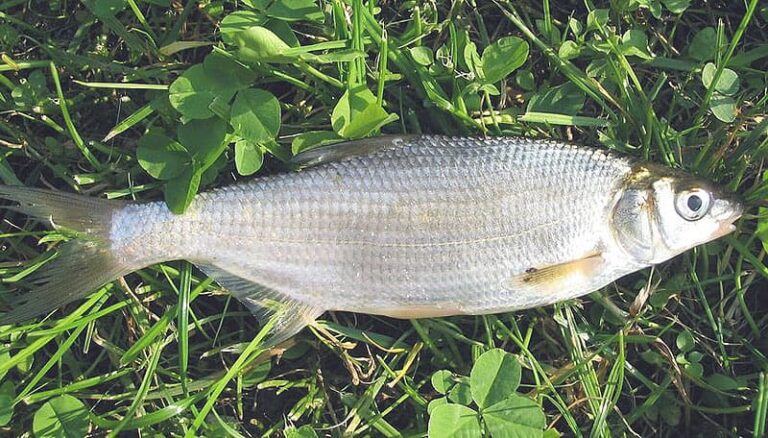
Feeding Habits
Diet
Vimba Breams are omnivorous, feeding on various food sources, including aquatic invertebrates, small fishes, algae, and plant material.
Feeding behavior
Vimba breams’ feeding behaviour involves actively foraging for food in their preferred habitats, where they consume diverse prey.
Reproduction
Spawning behavior
Spawning for the Vimba Bream occurs in spring when water temperatures rise to 12-14°C (54-57°F). During this period, the fish migrate upstream to select suitable gravelly or sandy river areas for egglaying. After the eggs hatch and the juveniles have sufficiently matured, they typically migrate back to deeper waters, continuing their life cycle. This migratory spawning behaviour is a crucial aspect of the species’ lifecycle, ensuring the continuation of the species in its preferred habitats.
Fishing Interests and Techniques
Fishing interest
Although not a primary target for sport fishing, Vimba Breams are valued by anglers for their fighting spirit. They are also appreciated for their taste, making them a desired catch for recreational fishing.
Fishing techniques
Anglers targeting Vimba Breams often use float fishing, bottom fishing with bait (like worms or small fish), and occasionally fly fishing in shallower waters.
Conservation Status
IUCN Red List status
The Vimba Bream is currently listed as Least Concern on the IUCN Red List, indicating that it is not facing any immediate threat of extinction. However, like many fish species, it is susceptible to habitat degradation and overfishing.
Conservation efforts and challenges
Conservation efforts for the Vimba Bream primarily focus on habitat protection, sustainable fishing practices, and monitoring of populations to ensure their long-term viability. Challenges include the impact of human activities on their natural habitats and the need for effective management strategies to maintain healthy populations of this fish species.

